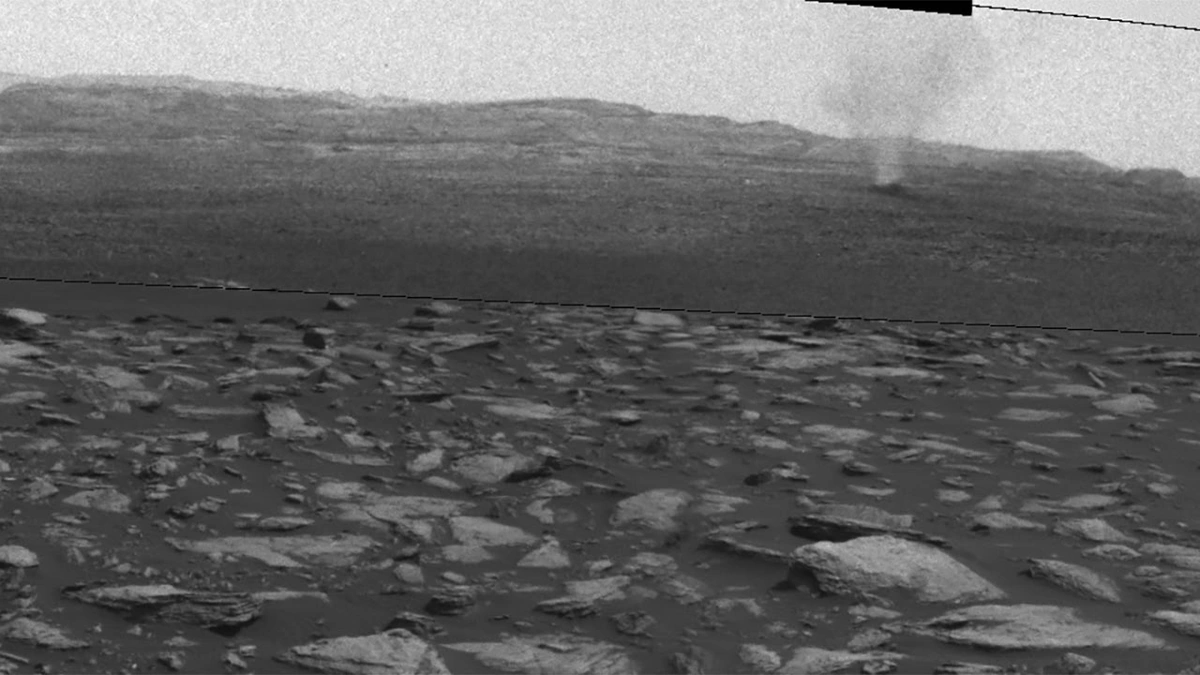Okay, let’s be honest – Mars is already incredibly fascinating. But what if I told you that Martian dust devils – those swirling columns of dust that look like miniature tornadoes – are even more abundant and widespread than we previously thought? And what if I added that AI is helping us understand them better? A new study, leveraging data from European orbiters, has mapped over 1000 of these dust devils, changing our understanding of the Red Planet.
Why This Matters | More Than Just Pretty Pictures

So, why should you care about Martian dust devils ? They aren’t just cool visuals. These dust devils play a significant role in the Martian climate. They lift dust high into the atmosphere, influencing temperature, wind patterns, and even the distribution of water ice. A common mistake is thinking Mars is a static, dead world. It’s not! The dust devils are a key dynamic element. Understanding their behavior is crucial for more accurate climate models. Think of it like this: imagine trying to predict India’s monsoon without understanding how the Thar Desert impacts weather systems. You simply can’t do it properly.
And that’s where the AI comes in. Manually identifying and mapping these dust devils from orbital images would be a Herculean task. It would take ages! But AI algorithms can sift through vast amounts of data far more efficiently, allowing scientists to identify patterns and trends that would otherwise go unnoticed. According to a recent report published on Space.com , this collaboration between AI and human researchers is revolutionizing planetary science. It allows us to ask new questions and uncover hidden secrets of our solar system.
The ‘How’ | AI’s Detective Work on Mars
Let’s break down how this AI-powered mapping works. European orbiters, like the Mars Express and the Trace Gas Orbiter, have been diligently collecting high-resolution images of the Martian surface for years. This creates a massive dataset far too large for humans to analyze exhaustively. The AI algorithms are trained to recognize the distinctive features of dust devils: their shape, shadows, and the trails they leave behind. I initially thought this was straightforward, but then I realized the algorithm also has to differentiate dust devils from other similar features, like craters or dunes.
The AI sifts through these images, flagging potential dust devils for further review. Human scientists then validate the AI’s findings, ensuring accuracy and refining the algorithms. The end result? A comprehensive map of over 1000 Martian dust devils, along with valuable data about their size, distribution, and activity. This data contributes to a deeper understanding of the Martian atmosphere and its dynamics.
Dust Devils and Future Missions | A Critical Connection
Why does all this matter for future Mars missions, including potential human exploration? Well, for starters, dust devils can pose a hazard to rovers and landers. These whirling dervishes can coat solar panels with dust, reducing their efficiency, and even damage sensitive equipment. Secondly, dust devils contribute to the overall dustiness of the Martian atmosphere. And this dust can affect the performance of spacecraft and the health of astronauts. Understanding the behavior of dust devils is therefore crucial for planning safe and successful missions.
Furthermore, the distribution of dust affects the global climate model . As per the guidelines mentioned in Wikipedia , the information about atmospheric dust is used to predict the temperature changes on the planet. So, we can’t ignore aeolian processes .
The European Space Agency (ESA) , who operate the orbiters providing the data, are particularly interested in these findings. What fascinates me is the potential to use this information to predict dust devil activity in specific regions, allowing future missions to avoid areas with high dust devil frequency.
AI and the Future of Martian Exploration
The success of this study highlights the growing role of AI in planetary science. As we gather more and more data from Mars and other celestial bodies, AI will become increasingly essential for making sense of it all. It’s not about replacing human scientists, but about augmenting their abilities, allowing them to focus on the most important questions and make new discoveries. A common mistake I see people make is thinking AI will take over entirely. It will enhance, not replace.
The use of artificial intelligence to study Martian dust devils offers insights into the planet’s geology. The insights help scientists predict the effects of dust accumulation on equipment. According to the study, AI is helping refine our understanding of planetary science .
But there’s also something deeply inspiring about this. Here’s the thing: we’re using cutting-edge technology to study a phenomenon that’s been happening on Mars for billions of years. These dust devils are a reminder that even seemingly desolate worlds are dynamic and active, full of surprises waiting to be uncovered. The new discoveries can influence future space missions .
Frequently Asked Questions (FAQ)
FAQ
Why are Martian dust devils important to study?
They impact the Martian climate, affecting temperature, wind patterns, and dust distribution.
How does AI help in mapping dust devils?
AI algorithms can efficiently analyze vast amounts of orbital imagery to identify and map dust devils.
Can dust devils pose a risk to Mars missions?
Yes, they can coat solar panels with dust and potentially damage equipment.
What kind of data do European orbiters provide?
High-resolution images of the Martian surface used to identify dust devils.
Will AI replace human scientists in planetary exploration?
No, AI augments scientists’ abilities, enabling them to analyze data more efficiently.
What is the role of European Space Agency in all of these?
ESA is the operator of orbiters providing data for studying Martian dust devils.




